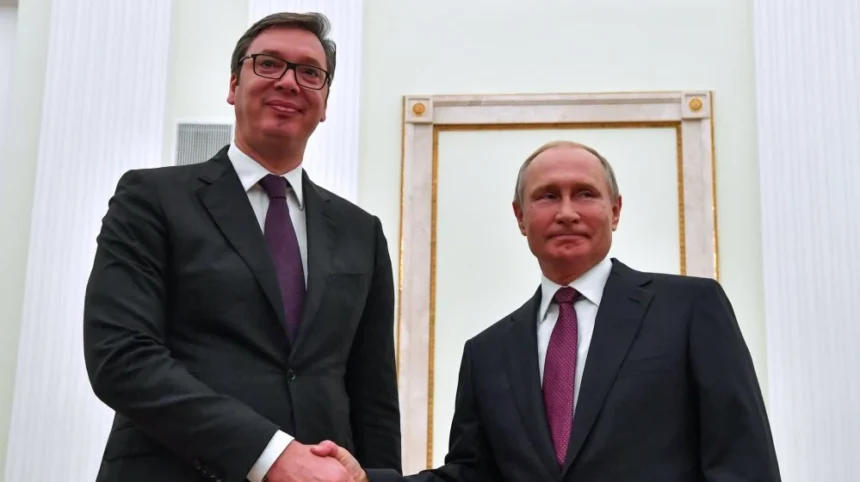Serbia’s Delicate Balance Between U.S. Sanctions and Historical Ties with Russia: A Geopolitical
Serbia Navigates Geopolitical Tensions Between U.S. Sanctions and Strong Historical Ties with Russia
The United States has imposed sanctions on Gazprom Neft, the largest shareholder of Serbia’s Oil Industry (NIS), marking a significant shift in the country’s energy and security policies. These sanctions aim to seize Russian ownership of NIS, a vital player in Serbia’s energy security. This move comes amid Serbia’s recent military agreements with Russia, including the ongoing reliance on Russian military equipment like MiG-29 fighter jets and T-72 tanks. However, the increasing strain of balancing these relationships has prompted Serbia to reconsider its position on the global stage.
The Energy Dilemma: Russia’s Influence in the Balkans
Russia’s energy policy in the Balkans has long been a source of influence, especially in Serbia and North Macedonia, where Russia fulfills nearly 90% of the natural gas demand. Serbian energy security is at the core of its geopolitical strategy, with companies like Lukoil and Gazprom securing major stakes in key Serbian assets such as Beopetrol and NIS. Russia’s energy dominance in the region extends to Bosnia and Herzegovina, where it holds critical oil and gas investments, particularly in the Serb-majority areas.
The country’s dependence on Russian energy supplies reflects a deeper geopolitical connection, often reinforcing the divide between the region’s Orthodox Christian populations and others, particularly in Bosnia, where Russian investments are concentrated in the Republika Srpska entity.
Security Policy and Anti-NATO Sentiment
Russia’s security policy in the region remains anchored in an anti-NATO stance, which resonates strongly with Serbia’s Orthodox Christian identity. Despite withdrawing from the region in 2003, Russia continues to view the Balkans as strategically significant. Russia’s military collaboration with Serbia, including a 2016 defense agreement, saw annual military exercises and advanced weapons systems procurement. The “Slavic Brotherhood” exercises, involving Serbia, Russia, and Belarus, exemplify Moscow’s efforts to maintain a cultural and military influence in the region.
Despite Serbia’s shift in military strategy with the recent cancellation of certain defense agreements with Russia, Russia remains Serbia’s strongest ally, particularly in opposing Kosovo’s independence—a cornerstone of Serbian foreign policy. Serbia’s reluctance to impose sanctions during the 2014 Crimean annexation and only partial sanctions during the 2022 Ukraine invasion showcase its delicate balancing act.
Serbia as a Potential Diplomatic Mediator
Amid the ongoing geopolitical tensions, Serbia seeks to position itself as a mediator between Russia and the West. President Aleksandar Vučić has expressed Serbia’s potential role as a host for talks between U.S. President Donald Trump and Russian President Vladimir Putin. Serbia’s neutral stance, not being a NATO member, enhances its credibility as a potential diplomatic bridge between the two rival powers.
Serbia’s diplomatic outreach seeks to increase its international prestige while maintaining strong ties with Russia. However, its energy dependence on Moscow, coupled with Russia’s veto power on Kosovo’s independence at the UN Security Council, makes a complete shift in alignment impractical.
Conclusion: Serbia’s Realpolitik Strategy
Serbia’s foreign policy reflects a complex dance between strategic ambitions and the limitations imposed by its reliance on both Russia and the West. While Serbia is a candidate for EU membership, its enthusiasm for integration has waned due to regional crises, such as the refugee crisis and Brexit. Serbia’s future will be shaped by its ability to balance its relationships with global powers, navigating both the pressures of U.S. sanctions and the deep-rooted ties with Russia. This geopolitical balancing act is unlikely to end soon as Serbia continues to tread carefully between its competing alliances.







